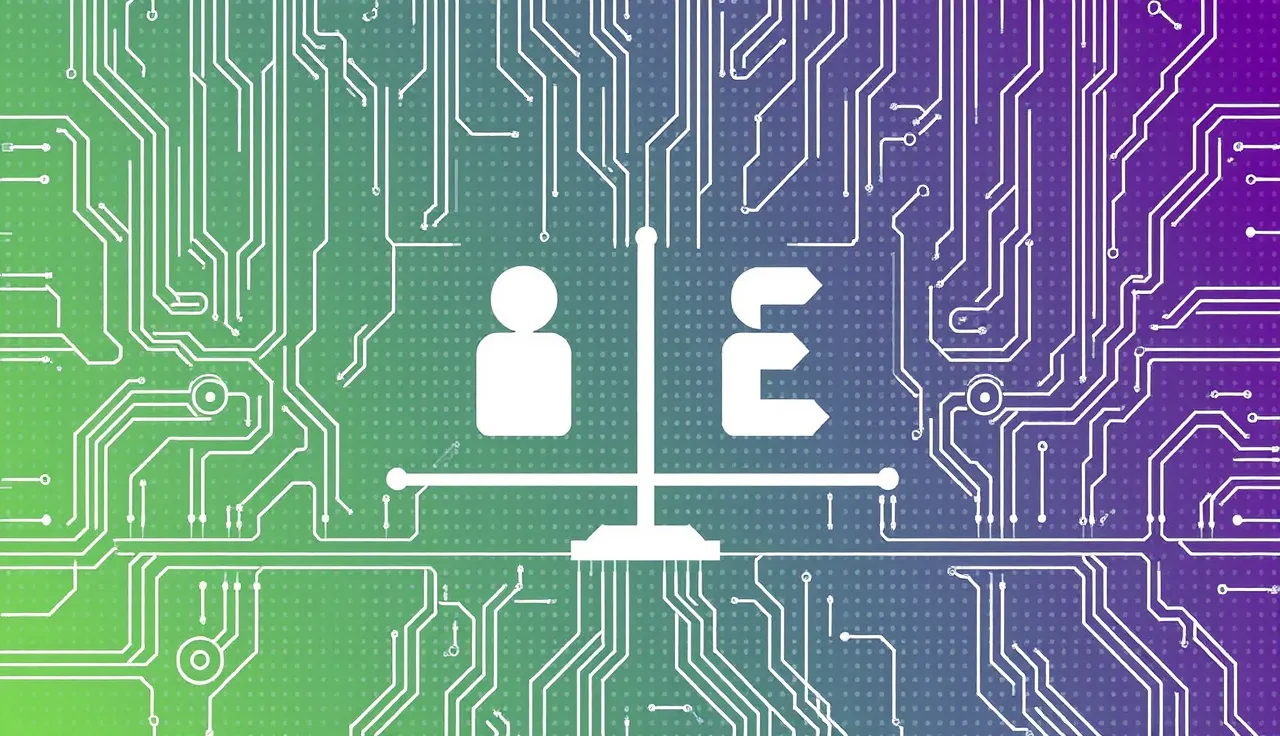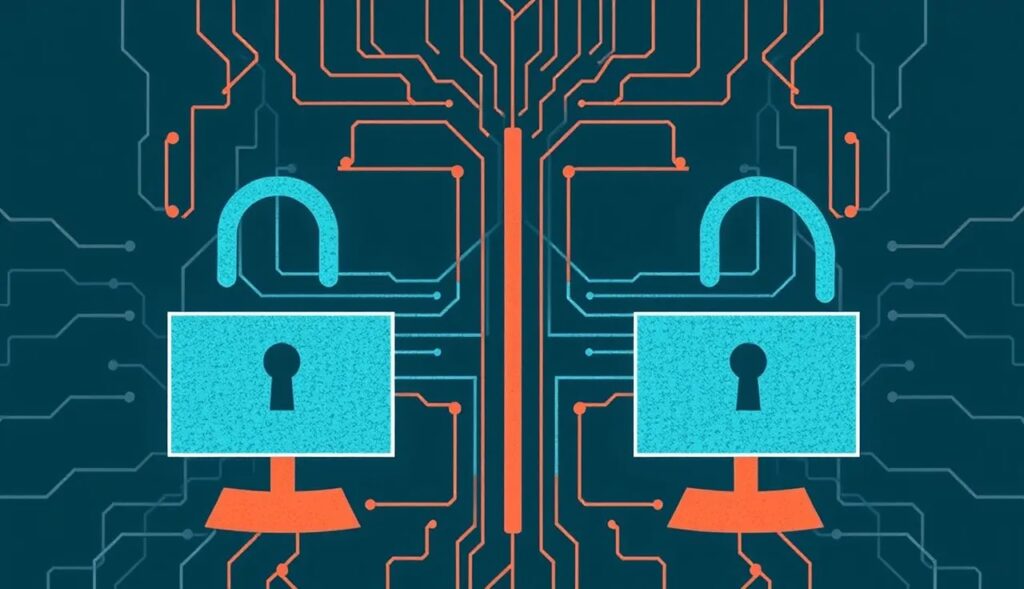
In the dynamic world of cybersecurity, hackers and defenders engage in an unending, silent battle. Their strategies influence each other, creating a competitive landscape. Nash equilibrium, a key concept from game theory, provides a lens through which we can understand this interplay.
By identifying equilibrium points, organizations can predict attackers’ behaviors and optimize defenses, ensuring a strategic edge.
The Role of Nash Equilibrium in Cybersecurity
Understanding Nash Equilibrium in Cyber Contexts
A Nash equilibrium occurs when no party can improve their position by unilaterally changing their strategy. In cybersecurity, it represents a balance where both hackers and defenders have optimized their actions against each other.
- For Hackers: At equilibrium, attackers deploy the most efficient techniques with minimal risk of detection.
- For Defenders: Security teams focus on mitigating the most probable and impactful threats.
Example: If attackers favor phishing as an entry point, defenders may optimize anti-phishing training and tools. Neither can unilaterally shift their strategy without reducing their success.
Real-World Applications of Nash Equilibrium in Cybersecurity
Malware Propagation and Network Defense
Cybersecurity often resembles a game of attack and defense. For instance, in defending against malware propagation, both sides aim for strategic advantage:
- Hackers: Deploy malware that evades detection mechanisms.
- Defenders: Optimize network monitoring and patch management to limit vulnerabilities.
Nash Equilibrium Example: A company may decide to prioritize patching high-risk vulnerabilities based on hacker behavior, while attackers adapt by exploiting less obvious flaws. Both settle into a balance, where altering strategies yields diminishing returns.
Denial-of-Service (DoS) Attacks and Mitigation Strategies
In a DoS attack scenario, hackers aim to overwhelm a system, while defenders focus on maintaining service availability.
- Attackers’ Strategy: Choose targets with the greatest impact and lowest cost.
- Defenders’ Strategy: Invest in scalable infrastructure and mitigation tools like rate-limiting or cloud-based traffic scrubbing.
At Nash Equilibrium: Attackers may limit attack intensity to avoid detection, while defenders allocate just enough resources to maintain service without overspending.
Modeling Cybersecurity with Game Theory
Zero-Sum vs. Non-Zero-Sum Scenarios
Cybersecurity games are often non-zero-sum, meaning both sides can gain or lose simultaneously. For example, an undetected attack could harm both a company’s reputation and the hacker’s anonymity if revealed.
Dynamic Scenarios:
- Phishing Campaigns: Hackers balance email volume with quality to avoid detection, while defenders enhance filters without blocking legitimate messages.
- Ransomware: Attackers set ransom amounts low enough to incentivize payment but high enough to profit. Defenders weigh the cost of paying versus recovery.
Achieving Strategic Balance in Cybersecurity

Proactive Defense with Nash Insights
Understanding potential Nash equilibria enables defenders to anticipate hacker moves and focus resources effectively.
- Threat Intelligence Sharing: By pooling data across organizations, defenders can collectively disrupt attackers’ strategies, forcing them to adapt or retreat.
- Risk Assessment: Nash equilibrium guides decision-making by prioritizing defenses against the most likely and damaging threats.
Hacker Adaptation and Defense Evolution
Hackers frequently adapt tactics to regain the advantage, disrupting established equilibria. Defenders must embrace continuous monitoring and AI-driven analytics to stay agile.
Future Implications of Nash Equilibrium in Cybersecurity
AI-Driven Cyber Battles
As AI becomes a tool for both attackers and defenders, game theory will help balance automated decision-making systems.
- Autonomous Threat Detection: AI systems could identify Nash equilibria in real-time, reallocating resources dynamically to counter adaptive threats.
- Adversarial AI: Attackers might leverage AI to model defender responses, pushing the equilibrium to their advantage.
Policy Impacts and International Cybersecurity
Game theory can inform policies for global cooperation, such as cyber norms or agreements to limit specific attack types. Nash equilibrium ensures mutual restraint in cyber warfare scenarios, as escalating attacks harm all parties.
Conclusion
The silent battle between hackers and defenders is a complex, evolving landscape. Nash equilibrium provides a powerful framework to predict and counter cyber threats, balancing strategies in a high-stakes game. As the cybersecurity field embraces more sophisticated technologies, integrating game theory could be the key to staying one step ahead of attackers.
FAQs
Can game theory and Nash equilibrium improve AI-driven cybersecurity?
Yes, game theory and Nash equilibrium are integral to designing AI systems that respond dynamically to cyber threats.
Example: AI-powered threat detection systems can predict Nash equilibria in real-time, allocating resources to the most likely attack vectors. This enables defenders to maintain optimal strategies without wasting resources on low-risk scenarios.
How does Nash equilibrium affect international cybersecurity policies?
In international contexts, Nash equilibrium informs policies that prevent escalations in cyber warfare.
Example: Two countries might agree to limit specific cyberattacks, like those targeting critical infrastructure. At equilibrium, both nations benefit from mutual restraint, as neither gains from violating the agreement and risking retaliation.
What are the limitations of Nash equilibrium in cybersecurity?
While Nash equilibrium is a valuable tool, it assumes rational behavior, which may not always apply in cyber scenarios.
Example: A hacker motivated by ideology rather than profit might ignore equilibrium strategies, launching attacks without concern for retaliation. Similarly, defenders might overreact to low-level threats, disrupting the balance Nash equilibrium predicts.
How do defenders use Nash equilibrium to prioritize resources?
Nash equilibrium helps defenders allocate resources by identifying the most likely attack vectors and optimizing defenses against them.
Example: If attackers frequently exploit unpatched software, defenders may prioritize patch management and vulnerability scanning. At equilibrium, attackers adapt by seeking less obvious targets, but the defender’s allocation remains focused on areas of highest risk.
Can Nash equilibrium help predict cyberattack patterns?
Yes, Nash equilibrium can reveal predictable behaviors in attackers by modeling their incentives and constraints.
Example: Hackers targeting a financial institution may initially attempt direct attacks. If the institution strengthens defenses, attackers might shift to targeting less secure third-party vendors. Nash equilibrium reflects this adjustment, helping defenders predict and counter these shifts.
How does Nash equilibrium apply to phishing defense?
In phishing scenarios, Nash equilibrium arises when both attackers and defenders optimize their approaches to minimize effort and maximize outcomes.
Example: Attackers balance phishing email volume with sophistication, avoiding detection by spam filters. Defenders, in turn, focus on employee training and advanced filtering algorithms. At equilibrium, the effectiveness of phishing attempts and defenses stabilizes, guiding future strategies for both sides.
Is Nash equilibrium relevant for insider threats?
Yes, Nash equilibrium can model the dynamics of insider threats by considering the motivations and behaviors of internal actors.
Example: If a company invests in monitoring systems and ethical workplace policies, potential malicious insiders might decide that the risks of being caught outweigh the benefits. The equilibrium occurs when both sides adjust their actions based on perceived risks and rewards.
How does Nash equilibrium affect zero-day vulnerabilities?
In the case of zero-day vulnerabilities, Nash equilibrium influences the timing and method of their exploitation and defense.
Example: Attackers may delay using a zero-day exploit until they can maximize its impact, while defenders continuously update security systems to minimize potential exposure. At equilibrium, both sides settle into a pattern where attackers optimize timing, and defenders focus on broader resilience.
Can Nash equilibrium address social engineering attacks?
Yes, Nash equilibrium models the balance between social engineering tactics and the effectiveness of human-focused defenses.
Example: Attackers may use realistic but low-effort social engineering techniques, such as impersonation calls, while defenders train employees to recognize common red flags. The equilibrium represents a stable point where attackers succeed only at predictable rates, allowing defenders to refine training priorities.
What role does Nash equilibrium play in cyber insurance?
Cyber insurance markets use Nash equilibrium to set premiums and coverage terms based on predicted attack and defense patterns.
Example: Insurers might adjust premiums for companies in industries prone to ransomware attacks, incentivizing them to adopt robust defenses. At equilibrium, companies invest in security measures proportional to the cost of potential attacks, balancing insurance expenses and cybersecurity investments.
How do attackers disrupt equilibrium to gain an advantage?
Attackers often innovate to break established equilibria and regain the upper hand.
Example: Introducing zero-click exploits (attacks that don’t require user interaction) disrupts traditional defenses like phishing training, forcing defenders to adapt with updated detection mechanisms. This innovation temporarily shifts the balance before equilibrium is reestablished.
How does Nash equilibrium apply to nation-state cyber conflicts?
In nation-state cyber conflicts, Nash equilibrium guides strategies to prevent escalation or retaliation.
Example: If two nations engage in cyber espionage, both may avoid targeting critical infrastructure to prevent retaliation that could escalate to physical conflict. At equilibrium, cyberattacks focus on less sensitive targets, maintaining a precarious balance.
Can Nash equilibrium guide ethical AI development in cybersecurity?
Yes, Nash equilibrium helps ensure fairness and predictability in AI-driven defense systems.
Example: An AI-based threat detection system that over-prioritizes certain threat types could inadvertently expose other vulnerabilities. Using Nash equilibrium, developers ensure balanced AI responses, maximizing coverage without creating exploitable blind spots.
Resources
Beginner-Friendly Resources
- Khan Academy: Game Theory and Nash Equilibrium
An excellent starting point for understanding game theory basics, including Nash equilibrium, with interactive lessons and simple examples.
Visit Khan Academy - CS50’s Introduction to Cybersecurity
Harvard’s CS50 series offers accessible introductions to key cybersecurity concepts, including strategy modeling and defense mechanisms.
Visit CS50 Cybersecurity - Books:
- “The Joy of Game Theory” by Presh Talwalkar – A reader-friendly exploration of game theory concepts with practical applications.
Intermediate Resources
- “Game Theory in Cyber Security” by SpringerLink
A research-based resource detailing how game theory applies to modern cybersecurity challenges, including Nash equilibrium.
Access SpringerLink - MIT OpenCourseWare: Game Theory and Computer Science
A course exploring the intersection of game theory, Nash equilibrium, and strategic decision-making in computer science contexts, including cybersecurity.
Visit MIT OCW - Books:
- “Introduction to Game Theory” by Martin J. Osborne – A detailed yet accessible guide to core game theory concepts, including their cybersecurity applications.
Advanced and Specialized Resources
- Research Journals:
- ACM Transactions on Privacy and Security (TOPS): Includes papers on game theory’s role in cybersecurity, highlighting practical Nash equilibrium applications.
Visit ACM TOPS - Cybersecurity Game Theory Models: Articles on ResearchGate cover topics like Nash equilibria in advanced threat modeling and response strategies.
Visit ResearchGate
- ACM Transactions on Privacy and Security (TOPS): Includes papers on game theory’s role in cybersecurity, highlighting practical Nash equilibrium applications.
- Books:
- “Algorithmic Game Theory” by Noam Nisan et al. – An advanced book detailing computational game theory methods, including their application in cybersecurity.
- “Cybersecurity and Game Theory” by Richard La – A focused exploration of how Nash equilibrium and related concepts shape cybersecurity practices.
- Workshops and Conferences:
- IEEE Symposium on Security and Privacy: Often includes sessions on game-theoretic models in cybersecurity.
Visit IEEE S&P
- IEEE Symposium on Security and Privacy: Often includes sessions on game-theoretic models in cybersecurity.
Practical Tools and Applications
- Cybersecurity Simulators:
- Cyberbit Range: A platform for practicing cyber defense strategies using game-theoretic insights.
Visit Cyberbit - Red-Blue Team Simulations: Tools for mimicking attacker (red team) and defender (blue team) strategies to study equilibrium scenarios.
- Cyberbit Range: A platform for practicing cyber defense strategies using game-theoretic insights.
- Nash Equilibrium Calculators:
Online tools like Nashpy allow you to model and compute Nash equilibria in strategic scenarios, including simplified cyberattack simulations.
Use Nashpy
Industry and Real-World Applications
- DeepMind’s Research Papers:
Papers on strategic AI defense systems explore Nash equilibrium’s role in automated threat detection and response.
Visit DeepMind - National Institute of Standards and Technology (NIST)
NIST provides frameworks like the Cybersecurity Framework, often incorporating strategic models informed by game theory principles.
Visit NIST Cybersecurity